Artemisia II of Caria
From Wikipedia, the free encyclopedia
For the female Persian admiral of Halicarnassus who fought at the Battle of Salamis, see Artemisia I of Caria.
| Artemisia II | |
|---|---|

Artemisia Prepares to Drink the Ashes of her Husband, Mausolus (c.1630) by Francesco Furini
| |
| Satrap of Caria | |
| Reign | 353–351 BCE |
| Predecessor | Mausolus |
| Successor | Idrieus |
| Consort | Mausolus |
| House | Hecatomnids |
| Father | Hecatomnus |
Artemisia II of Caria (Greek: Ἀρτεμισία; died 350 BCE) was the sister, the wife, and the successor of Mausolus, ruler of Caria, who was nominally the Persian satrap; Mausolus enjoyed the status of king or dynast of the Hecatomnid dynasty. After the death of her brother/husband, she reigned for two years, from 353 to 351 BCE. Her administration was conducted on the same principles as that of her husband; in particular, she supported the oligarchical party on the island of Rhodes.[1]
Because of her grief for her brother-husband, and the extravagant and downright bizarre forms it took, she became to later ages "a lasting example of chaste widowhood and of the purest and rarest kind of love", in the words of Giovanni Boccaccio.[2] In art she was usually shown in the process of consuming his ashes, mixed with drink.
Contents
[hide]Life[edit]
She is renowned in history for her extraordinary grief at the death of her husband (and brother) Mausolus. She is said to have mixed his ashes in her daily drink, and to have gradually pined away during the two years that she survived him. She induced the most eminent Greek rhetoricians to proclaim his praise in their oratory; and to perpetuate his memory she built at Halicarnassus the celebrated Mausoleum at Halicarnassus, listed by Antipater of Sidon as one of the Seven Wonders of the Ancient World and whose name subsequently became the generic term for any splendid sepulchral monument.[3]
Polyaenus, in the eighth book of his work Stratagems, mentions that when Artemisia (he may have been referring to Artemisia I, but more probably Artemisia II) wanted to conquer Latmus, she placed soldiers in ambush near the city and she, with women, eunuchs and musicians, celebrated a sacrifice at the grove of the Mother of the Gods, which was about seven stades distant from the city. When the inhabitants of Latmus came out to see the magnificent procession, the soldiers entered the city and took possession of it.[4]
Other monuments[edit]
Another celebrated monument was erected by her in Rhodes to commemorate her conquest of the island. The Rhodians, after regaining their liberty, made it inaccessible, whence it was called in later times the Abaton (άβατον).[5]
In later art[edit]
Artemisia drinking her husband's ashes was a subject in painting from the Renaissance onwards, especially enjoying a vogue in Dutch Golden Age painting around the middle of the 17th century, being painted by Rembrandt (Prado) among others. This was probably stimulated by the publication in 1614 of a Dutch translation of the collection of anecdotes of Valerius Maximus, who was active in the reign of Tiberius. Rembrandt for one can be shown to have read and used this book.[6]
Artemisia is always shown with a cup or urn, either alone or with a group of attendants offering or helping to mix the drink. The subject is therefore very similar to Sophonisba taking poison, and the Rembrandt, and a Donato Creti in the National Gallery, are examples of works where the intended subject remains uncertain between the two.[7]
Other cultural references[edit]
Artemisia received a full and friendly biography in the De mulieribus claris ("On Famous Women"), a collection of biographies of historical and mythological women by the Florentine author Giovanni Boccaccio, written by 1374. Boccaccio completely omits reference to her husband being her brother ("...knowledge of her parents or native country has not reached us..."), and praised her: "to posterity she is a lasting example of chaste widowhood and of the purest and rarest kind of love".[8]
The Scottish poet Robert Burns also made reference to Queen Artemisia in an epigram - Another [Epigram on the Said Occasion...On a Henpecked Country Squire] (1784).
Artemisia is referenced in the manga 12 Days by June Kim, about a woman who mourns her former girlfriend by drinking her ashes mixed with fruit smoothies.
Notes[edit]
- ^ Diodorus Siculus, Bibliotheca, xvi. 36, 45; Demosthenes, Speeches, "On the liberty of the Rhodians", 11, 27
- ^ De mulieribus claris ("On Famous Women"), Chapter 57, translation by Virginia Brown, Harvard University Press, 2003, ISBN 0674011309, 9780674011304
- ^ Cicero, Tusculanae Disputationes, iii. 31; Strabo, Geography, xiv. 2; Aulus Gellius, Noctes Atticae, x. 18; Pliny, Natural History, xxv. 36, xxxvi. 4; Valerius Maximus, Facta et dicta memorabilia, iv. 6; Suda, s.v. "Artemisia", "Mausolos"
- ^ Polyaenus: Stratagems- BOOK 8, 53.4 "Artemisia planted soldiers in ambush near Latmus; and herself, with a numerous train of women, eunuchs and musicians, celebrated a sacrifice at the grove of the Mother of the Gods, which was about seven stades distant from the city. When the inhabitants of Latmus came out to see the magnificent procession, the soldiers entered the city and took possession of it. Thus did Artemisia, by flutes and cymbals, possess herself of what she had in vain endeavoured to obtain by force of arms."
- ^ Vitruvius, De architectura, ii. 8
- ^ Golahny, Amy, Rembrandt's Reading: The Artist's Bookshelf of Ancient Poetry and History, pp. 129-133, 2003, Amsterdam University Press, ISBN 9053566090, 9789053566091
- ^ Finaldi, Gabriele and Kitson, Michael, Discovering the Italian Baroque: the Denis Mahon Collection, p. 56, 1997, National Gallery Publications, London/Yale UP, ISBN 1857091779
- ^ Chapter 57, translation by Virginia Brown, Harvard University Press, 2003, ISBN 0674011309, 9780674011304
References[edit]
- Smith, William (editor); Dictionary of Greek and Roman Biography and Mythology, "Artemisia (2)", Boston, (1867)
- Virginia Brown's translation of Giovanni Boccaccio’s Famous Women, pp. 115–118; Harvard University Press 2001; ISBN 0-674-01130-9
 This article incorporates text from a publication now in the public domain: Smith, William, ed. (1870). "article name needed". Dictionary of Greek and Roman Biography and Mythology.
This article incorporates text from a publication now in the public domain: Smith, William, ed. (1870). "article name needed". Dictionary of Greek and Roman Biography and Mythology.
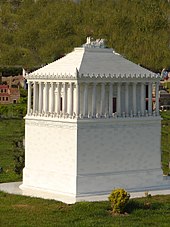

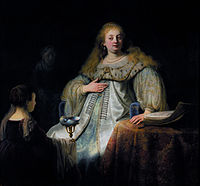


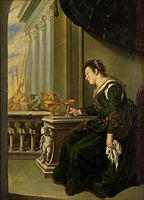
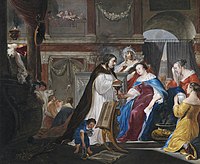

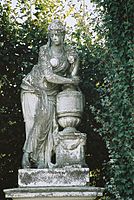
No comments:
Post a Comment